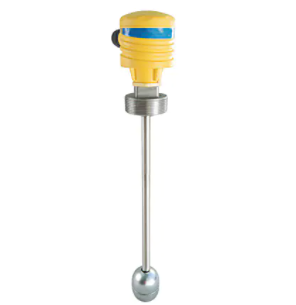How To Use & Select Level Transmitter Correctly from LeonN's blog
Level Transmitter is a kind of equipment which converts pressure into pneumatic signal or electrical signal for control and remote transmission. It can convert the gas, liquid and other physical pressure parameters detected by the pressure cell into standard electrical signals (such as 4-20mA, etc.)
How To Use Level Transmitter Correctly?
Provide auxiliary instruments such as indicating pressure transmitter alarm, recorder, regulator, etc. For measurement and indication and process procedures. Liquid level transmitter is commonly used in daily use, and it is widely used in engineering application because of its convenient installation, high measurement accuracy and long service life. If the liquid level transmitter is not operated properly, its performance may be degraded, sometimes even damaged. So, how to use and choose correctly? To sum up, there are mainly the following points.
1. It is better to choose a regulated power supply to supply power separately. The stability of the power supply affects the performance of the transmitter. It is better to control the error below one fifth of the allowable error of the transmitter. For products with special power supply requirements, special power supply must be connected.
2. The signal line of liquid level transmitter shall be shielded cable to prevent electromagnetic interference. 3、 Connect the transmitter according to the correct wiring method, and the power on time should be 15 to 30 minutes.
4. If the liquid level transmitter is installed in the pool, water tower and other occasions, its probe can be sunk at the bottom of the water, away from the position where the water flow is too fast.
5. For the installation of liquid level transmitter used in large fluctuation occasions such as submersible pump, it is best to use the method of inserting steel pipe. The steel pipe should be fixed firmly, a hole should be opened at intervals on the steel pipe, and the position of the steel pipe should be far away from the water inlet and outlet.
6. The junction box should be fixed firmly, or a fixed bracket should be installed, which should be protected from the dry and shady place, and should not be drenched by the rain
7. Protect the ventilation cable, do not bend or block it, let alone damage it. The excess cable can be coiled nearby.
8. Lightning protection measures shall also be taken for outdoor liquid level transmitter.
How To Select Level Transmitter Correctly?
Corrosive liquid; Viscous liquid; Molten and precipitated liquids; wait. When filling isolation liquid and other measures; Take the blowing or flushing liquid; Independent differential pressure transmitters can be selected. If you are looking for level transmitter, Sino-Inst has been manufacturing top quality level transmitter for decades, and has the best product ULT-100A Ultrasonic Level Transducer that sells at cheap price. Next, you are about to see the right way to select level transmitter.
1. For corrosive liquid, viscous liquid, easily gasified liquid, liquid containing suspended solid, etc. The self sealing flange differential pressure transmitter shall be selected;
2. For easy to crystallize liquid, high viscosity liquid, gelling liquid and precipitation liquid, self sealing plug-in flange differential pressure transmitter shall be selected.
3. When the object under test has a large amount of condensate or sediment, it is advisable to select self sealing double flange differential pressure liquid level transmitter;
4. Differential pressure liquid level transmitter measuring liquid level shall be equipped with positive and negative transfer mechanism, and its migration amount shall be determined when measuring instrument range;
5. Differential pressure liquid level transmitter is not used in the medium with obvious change of liquid density under normal working conditions.


The Wall